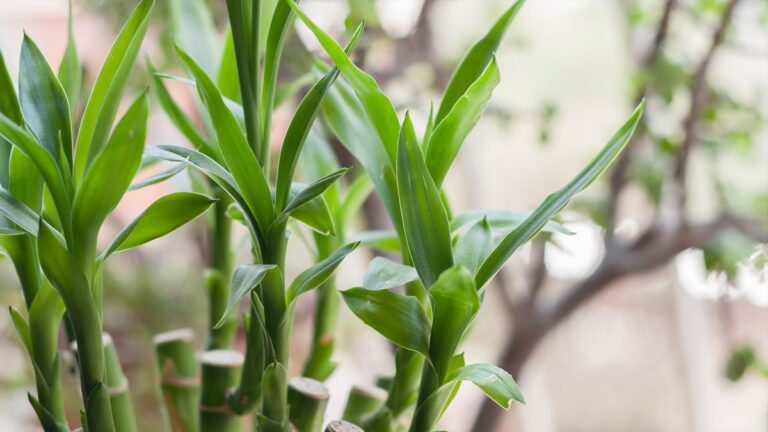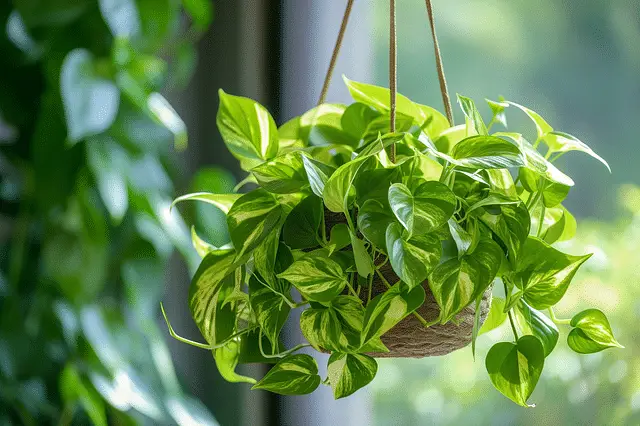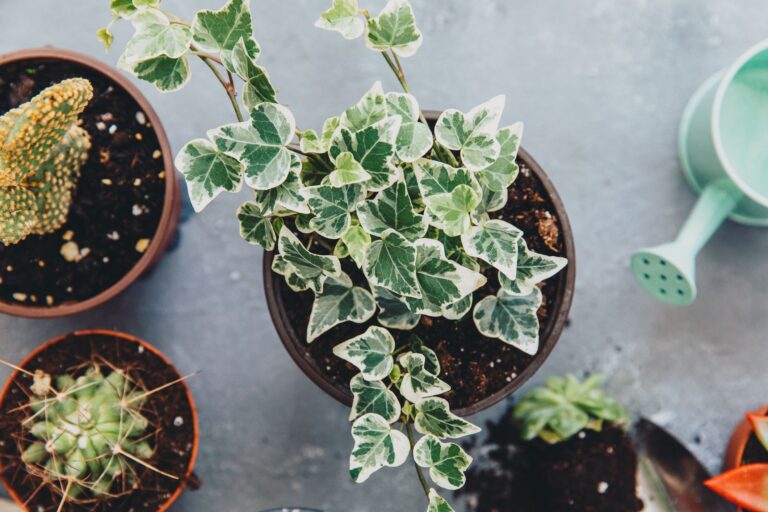Planting, Growing, and Caring for Chamomile
Table of Contents
Seeding or Transplanting Chamomile: Step-by-step instructions for successfully planting chamomile in your garden
When it comes to cultivating chamomile in your garden, there are two main methods you can choose from: seeding or transplanting. Both approaches have their own advantages and considerations, so it’s important to understand the steps involved in each process to ensure successful growth and establishment of your chamomile plants.
If you opt for seeding chamomile, begin by selecting a suitable location in your garden that receives full sun or partial shade. Chamomile thrives in well-drained soil, so make sure the area has proper drainage. Prepare the soil by removing any weeds or debris and loosening it with a garden fork or tiller. Sow the chamomile seeds directly onto the surface of the soil, gently pressing them into the ground but not covering them with soil. Lightly water the area to ensure good seed-to-soil contact and maintain consistent moisture levels. Germination usually takes around two weeks, and once the seedlings have emerged, thin them out to allow adequate space for each plant to grow.
On the other hand, if you prefer transplanting chamomile, start by germinating the seeds indoors in seed trays or pots filled with a well-draining seed starting mix. Keep the soil consistently moist but not waterlogged to encourage germination. Once the seedlings have developed a few sets of true leaves and are sturdy enough, they can be transplanted outdoors. Choose a location with similar conditions mentioned earlier and prepare the soil as required. Gently remove the seedlings from their containers, being careful not to damage the delicate roots. Dig small holes in the prepared soil, spacing the plants around 6 to 8 inches apart. Place the seedlings in the holes, backfill with soil, and lightly firm the soil around the base of each plant. Water thoroughly after transplanting to help settle the soil and support the plants’ establishment.

Providing Adequate Sunlight: Understanding chamomile’s sunlight requirements and the impact on growth and flowering
Chamomile, a delicate and aromatic herb, requires adequate sunlight to thrive and reach its full potential. Understanding the sunlight requirements of chamomile is crucial for ensuring the optimum growth and flowering of your plants.
Chamomile, scientifically known as Matricaria chamomilla, is a sun-loving plant that flourishes in full sun conditions. It requires a minimum of six hours of direct sunlight each day to thrive. Adequate sunlight not only aids in the production of essential nutrients, but also plays a vital role in the formation of flower buds and the overall development of the plant.
Insufficient sunlight can have a negative impact on the growth and flowering of chamomile. Without enough sun exposure, the plants may become leggy and weak, leading to a decrease in flower production. Additionally, inadequate sunlight can make the plants more prone to pest infestations and diseases. Therefore, it is crucial to ensure that your chamomile garden receives ample sunlight to promote healthy and vigorous growth.

Watering Chamomile: Proper techniques and frequency to maintain optimal moisture levels for healthy chamomile plants
Watering chamomile plants effectively is crucial for their optimal growth and overall health. As a gardener and horticulture expert, I understand the importance of maintaining the right moisture levels to ensure a flourishing chamomile garden. Proper techniques and frequency of watering can significantly impact the quality and quantity of chamomile blooms.
When it comes to watering chamomile, it’s essential to strike a balance between providing enough hydration without overwatering. Chamomile plants prefer consistently moist soil, but they don’t tolerate excessive moisture. Overwatering can lead to root rot and other fungal diseases, which can devastate your chamomile plants.
To avoid overwatering, it is best to water chamomile plants deeply but infrequently. Aim to water the plants once a week, ensuring that the moisture penetrates deeply into the root zone. When watering, direct the moisture at the base of the plant, avoiding wetting the foliage, as damp leaves are susceptible to diseases. Additionally, it’s advisable to water chamomile in the early morning or late afternoon to allow the foliage to dry off before nighttime, minimizing the risk of fungus growth.
Here’s a table outlining Proper Watering Techniques for Your Chamomile Plants to maintain optimal moisture levels and keep your chamomile garden healthy:
| Aspect | Guidelines |
|---|---|
| Watering Frequency | – Young Chamomile Plants: Water about 1 inch per week. As they mature, they become drought-tolerant. Allow the soil to dry out between moderate waterings. – In extremely hot climates, consider providing a bit more moisture. |
| Time of Day | – Water early in the morning or late in the evening to avoid evaporation and minimize stress on the plant. |
| Watering Method | – Use a gentle spray nozzle on a watering can or hose to avoid damaging the plant. – Water directly at the base of the plant, avoiding leaves and flowers. |
| Soil Moisture Check | – Regularly assess soil moisture. Stick your finger into the soil; if the top half inch is dry, it’s time to water. |
| Rain Gauge | – Set up a rain gauge in your garden to guide weekly watering. Empty it after each watering for accurate measurements. |
| Mulching | – Apply organic mulch (bark or shredded leaves) to help retain moisture and maintain even soil temperature. Keep mulch away from plant stems to prevent rot. |
Remember, chamomile is a delightful herb that appreciates a balanced approach to watering.
Fertilizing Chamomile: Nurturing your chamomile plants with appropriate fertilizers for robust growth and abundant blooms
Fertilizing chamomile is a vital step in nurturing your plants for robust growth and abundant blooms. By providing your chamomile with appropriate fertilizers, you can ensure they receive the necessary nutrients to thrive. It is essential to understand the specific nutrient requirements of chamomile to make informed choices when selecting fertilizers.
Chamomile plants generally benefit from a balanced fertilizer that contains equal parts nitrogen, phosphorus, and potassium (NPK). This balanced ratio promotes overall plant health and encourages vigorous growth, which in turn leads to more abundant blooms. However, it is crucial to note that chamomile plants have lower nutrient requirements compared to other plants. Using excessive amounts of fertilizer can result in excessive foliage growth and fewer flowers. Therefore, it is best to follow the manufacturer’s instructions and apply fertilizers in moderation to avoid overfeeding your chamomile plants.

Managing Pests and Diseases: Identifying common issues and implementing organic methods to protect your chamomile garden
Pests and diseases can pose a significant threat to the health and productivity of your chamomile garden. It is crucial to identify common issues early on so that you can implement organic methods to protect your precious plants. One common problem that chamomile growers face is aphid infestations. These tiny insects can quickly multiply and feed on the sap of your chamomile plants, causing stunted growth and deformation of leaves. To combat aphids, you can introduce beneficial insects like ladybugs or lacewings, which are natural predators of aphids. Additionally, you can make an organic insecticidal soap by combining a few drops of mild dish soap with water and spraying it on the affected plants. This solution helps suffocate and deter aphids without harming the chamomile flowers or the environment.
Another issue that can plague chamomile gardens is powdery mildew, a fungal disease that manifests as a white powdery substance on the leaves and stems. This disease thrives in humid conditions and can hinder the growth and blossoming of your chamomile plants. To prevent powdery mildew, it is essential to provide adequate air circulation and avoid overhead watering, as moisture on the leaves creates an ideal environment for the fungus to grow. If powdery mildew does appear, you can treat it by spraying a mixture of milk and water onto the affected plants. The natural proteins in milk have antifungal properties that can help suppress the spread of powdery mildew. Regularly monitoring your chamomile plants for signs of pests and diseases and taking proactive measures can greatly enhance the overall health and vitality of your garden.
Here’s a table outlining Managing Pests and Diseases for Your Chamomile Garden. We’ll identify common issues and suggest organic methods to protect your precious chamomile plants:
| Pest or Disease | Identification | Organic Treatment Methods |
|---|---|---|
| Aphids | Tiny insects found on the underside of leaves, causing yellowing and wilting. | – Use insecticidal soap or neem oil. – Introduce natural predators like ladybugs or lacewings. |
| Spider Mites | Tiny red or black insects that make the plant look dusty or speckled. | – Spray with a strong stream of water. – Apply insecticidal soap or neem oil. |
| Whiteflies | Small white insects causing yellowing and wilting of leaves. | – Treat with insecticidal soap or neem oil. – Introduce parasitic wasps and ladybugs. |
| Slugs and Snails | Slow-moving pests that chew irregular holes in leaves and flowers. | – Handpick them or set up beer traps. – Use diatomaceous earth or copper tape as repellents. |
| Cutworms | Larvae of moths that feed on stems, causing wilting. | – Wrap base with cardboard collars. – Introduce nematodes or parasitic wasps. |
Remember, organic methods are preferable to chemical pesticides as they protect beneficial insects and pollinators. Regularly check your chamomile plants for signs of pests to keep your garden healthy
Harvesting Chamomile Flowers: Best practices for harvesting chamomile at the peak
When it comes to harvesting chamomile flowers, timing is everything. To ensure the highest quality yield, it is essential to pick the flowers at their peak. The ideal time to harvest chamomile is when the petals have fully opened, displaying their vibrant white color. At this stage, the flowers are brimming with potent essential oils and are bursting with beautiful fragrance. It is important to note that chamomile flowers don’t all bloom simultaneously, so it’s best to inspect the plants regularly for flowers at the perfect stage of maturity.
To harvest chamomile flowers, gently pluck the fully bloomed flowers by hand, being sure to remove the entire flower head from the stem. It’s crucial to handle the flowers delicately to prevent damage and maintain their integrity. It is also advisable to harvest in the morning when the flowers are at their freshest and free from excess moisture. This will help to preserve the aroma and flavor of the chamomile flowers, ensuring a high-quality yield. Once harvested, the flowers can be used immediately or dried for future use.
Please do watch video!
How long does it take for chamomile seeds to germinate?
Chamomile seeds typically take about 7 to 14 days to germinate, depending on the conditions and the variety of chamomile.
Can chamomile be grown indoors?
Yes, chamomile can be grown indoors, but it requires a sunny location with at least 5-6 hours of direct sunlight daily.
How often should chamomile be watered?
Chamomile plants should be watered regularly, aiming to keep the soil consistently moist but not waterlogged. Watering every 2-3 days is usually sufficient, adjusting according to weather conditions.
Can I use synthetic fertilizers on chamomile plants?
It is recommended to use organic fertilizers on chamomile plants to promote healthy growth and avoid any negative impacts on the quality of the flowers.
What are some common pests and diseases that affect chamomile plants?
Some common pests that can affect chamomile plants include aphids, spider mites, and leafhoppers. Diseases such as powdery mildew and damping-off can also be problematic.
How do I know when chamomile flowers are ready to be harvested?
Chamomile flowers are ready to be harvested when they are fully open, with the petals flat and the center disc yellow and raised. Avoid harvesting flowers that are still closed or have wilted petals.
What is the best time of day to harvest chamomile flowers?
The best time to harvest chamomile flowers is in the morning, after the dew has dried but before the heat of the day. This ensures that the flowers have maximum potency and flavor.
How should chamomile flowers be dried for later use?
To dry chamomile flowers, gently remove them from the stems and spread them in a single layer on a clean, dry surface. Place them in a well-ventilated area away from direct sunlight and allow them to dry completely for about 1-2 weeks.
Can chamomile flowers be used fresh instead of dried?
Yes, chamomile flowers can be used fresh for making chamomile tea or other applications. However, they should be used immediately after harvesting for the best flavor and potency.
How long can chamomile flowers be stored?
Properly dried chamomile flowers can be stored in an airtight container in a cool, dark place for up to a year. However, it is recommended to use them within 6 months for the best flavor and aroma.

Nicole Burke is a dynamic writer at SouthElMonteHydroponics, fueled by her passion for horticulture and environmental sustainability. Armed with a degree in Environmental Science from a renowned institution, Nicole’s expertise lies in hydroponic gardening, organic farming, and biodiversity conservation. Her insatiable curiosity and love for nature drive her to explore innovative techniques in hydroponics, seeking to revolutionize the way we grow crops in urban environments. Nicole’s writing reflects her deep commitment to promoting eco-conscious practices and fostering a deeper connection between humans and the natural world. Through her engaging storytelling, she inspires others to embrace sustainable living and harness the power of hydroponics for a greener future.






